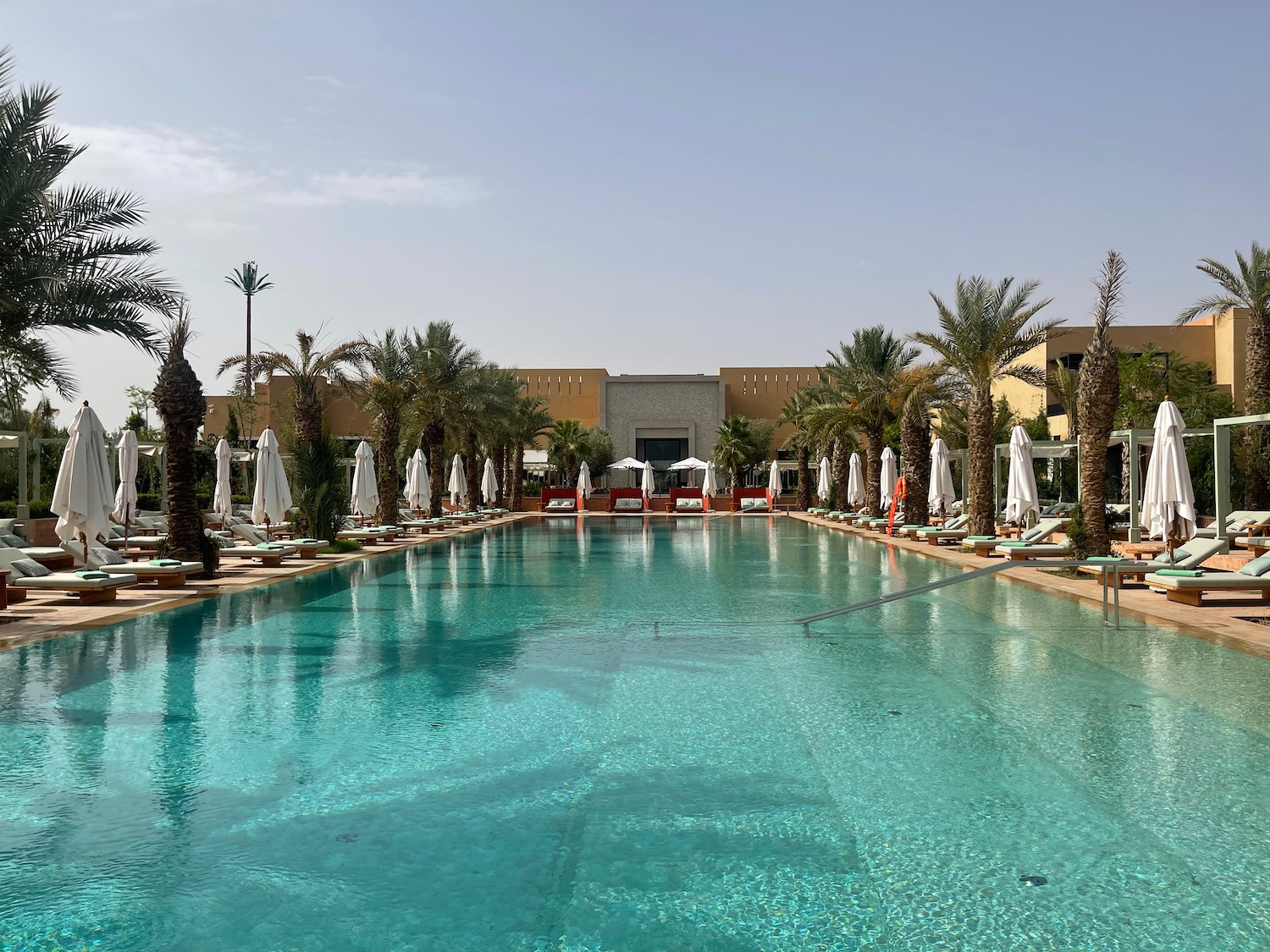Hyatt Hotels reported a small loss in in the second quarter of 2025 but there’s plenty of reason to be hopeful about the future ahead.

A Closer Look at the Numbers
Hyatt reported a small net loss of $3 million, but on an adjusted basis they pulled in $66 million. Earnings per share were knocked down to -$0.03, but again adjusted, they’re up $0.68. RevPAR (revenue per available room) rose a modest 1.6 percent overall, though luxury hotels led the way while some U.S. select-service spots lagged.
“At U.S. select service hotels, Hyatt’s business transient travel RevPAR declined by 1.5% year on year in the quarter, though business transient RevPAR was up “in the low single digits” for full-service properties,Hoplamazian shared on the call.” – Hotel Dive
Gross fees climbed nearly 9.5 percent to $301 million. Adjusted EBITDA came in at $303 million, down 1.1 percent year-over-year, but when you strip out asset sales from last year, it’s actually up 9 percent. Hyatt’s growth machine is rolling forward, with net rooms up 11.8 percent (or 6.5 percent excluding acquisitions) and a pipeline of about 140,000 rooms, up around 8 percent.
What’s Shining Bright
Luxury stays are pulling their weight, with RevPAR gains driven by high-end demand (hoteldive.com).
Strong performance in fee-based revenue shows the value of Hyatt’s asset-light model.
Room growth remains solid, and the pipeline is bursting, especially with the splashy Playa Hotels deal.
The debut of “Unscripted by Hyatt” opens a new, flexible avenue for growth in the upscale and upper-mid segments.
A Few Red Flags
On the face of it, Hyatt posted a tiny loss, though that mostly reflects one-off items (adjusted net income paints a sunnier picture).
Some less glamorous segments, like select-service hotels in the U.S., are underperforming compared to luxury counterparts. This suggests that the lower end of the market is softening while luxury is outperforming those declines for the most part.
Debt is ticking up, with total debt at $6 billion as of June 30, and liquidity at $2.4 billion.
What’s Up Next for Hyatt?
Hyatt expects RevPAR growth of 1–3 percent for the full year and net rooms growth of 6–7 percent (or up to 7.7 percent when including Playa). The year-end adjusted EBITDA guidance is $1.085 billion to $1.130 billion, a healthy 7–11 percent gain . Hyatt also plans to return about $300 million to shareholders in dividends and buybacks.
Most notably, Hyatt could be the first to indicate with hard numbers that travel in the current economic climate is diverging. Revenue and pricing continues to rise or hold its ground in the luxury segment while entry-level properties are showing the first signs of weakness. This could mean the hotelier continues to seek high-end properties and partnerships over adding further Hyatt Place sites or adding to the price-conscious select service market with additional brands.
“In the third quarter, Hyatt expects lower chain scales to continue to underperform luxury and international markets, in line with expectations the company shared during its first-quarter earnings call, CFO Joan Bottarini said on the call.” – Hotel Dive
There was also this cryptic statement from CEO, Hoplamazian:
“The CEO said Hyatt expects the brand to “scale rapidly through conversions.” – Hotel Dive
Conclusion
Hyatt’s Q2 2025 might not be headline fireworks, but it hums with promise. Adjusted profits and strong fee income show the payoff of going asset-light. Luxury growth and a robust development pipeline point toward brighter horizons. Debt and select-service softness remain watchpoints, but Hyatt’s strategy appears steady and hopeful for loyalists. It will be worth watching how those new brands and all-inclusive moves translate into real returns in the coming quarters.
What do you think?




I personally despise asset-light. I view it as a way for hotel chains to abrogate their responsibilities. When I stay at a Hyatt that is owned by Hyatt then it’s much simpler to have problems addressed because you’re dealing with the same company rather than a franchise where you may or may not have those problems addressed.
Like Marriott, Hyatt owns few of its hotels. They own a little more than Marriott but not much. The difference between Marriott or IHG and Hyatt is Hyatt manages the majority of its hotels across all brands worldwide. Hyatt is moving down the franchised model, but for now most full-service Hyatt properties (Park Hyatt, Grand Hyatt, Hyatt Regency) are still managed by corporate. Thompson, Hyatt House, Hyatt Place, JdV and Unbound are mostly franchised.
Select-service hotels are suffering because nobody who knows anything wants to pay $200 or $250 for a Hyatt Place or Fairfield.
I’m sure that despite the loss, Pritzker won’t have to curtail his visits to the all-you-can-eat buffet.
The issues with select service hotels in the US (HP/HH/HS) sure explains why Hyatt is leaning on them with promos. That said, if nothing else I’d note that when you have an HP/HH and a HR within a few blocks of one another and they’re priced about the same (e.g. there’s an HR and an HP next to O’Hare and both are Cat 2 and the HR might actually be a few bucks cheaper), Hyatt shouldn’t be shocked when the HP is underperforming vs the HR.
Look at Denver. Specifically, the suburbs.
You have a franchised Hyatt Regency in the Denver Tech Center. You also have nearby franchised Hyatt Place and Hyatt House properties. The rates at all three properties are about the same in cash.
The Hyatt Regency doesn’t have a club lounge, doesn’t have valet parking, doormen, bellmen or any kind of extra amenities or services. The free breakfast at the property is a buffet. The buffet is no better than the free-for-all-guests breakfast buffet at a Hyatt Place.
In this market, I’d rather book a Hyatt Place if the Hyatt Place was less money. There’s absolutely no reason to book the Hyatt Regency.
Another example is Dallas-Fort Worth.
There’s a Grand Hyatt inside the terminal. There’s a Hyatt Regency just outside the terminal but basically at the airport. The Hyatt Regency is a dumpy 1970s or 80s hotel with virtually no amenities or services. They have bellmen but no club lounge and rooms are worn and poorly maintained. Why book the Hyatt Regency if you can afford the Grand Hyatt? I don’t understand the justification for placing the two hotels right next to each other. Especially when one is a complete dump.
Hyatt in many markets has no apparent strategy or game plan.
Worse, owners don’t seem to want to build new Grand Hyatt or new Hyatt Regencies in the markets without a Hyatt full-service property. That’s probably because they already own existing hotels under competing brands. Why would a Marriott owner with a healthy business or perhaps even a monopoly want to cannibalize its hotel by building a Hyatt Regency or Grand Hyatt? That’s assuming the market can even support another full-service hotel.
Re: “Luxury growth … point toward brighter horizons.”, brighter for Hyatt’s bottom line and shareholders, maybe not so much for the “average” middle-class consumer. Luxury growth could be considered to be synonymous with conspicuous consumption, rich getting richer while poor get poorer and approaching plutocracy and/or oligarchy and/or aristocracy (all of which are obvious unwritten objectives of the GOP), ultimately lead to marked social unrest and likely collapse. Maybe not in our lifetimes, but it is inevitable.